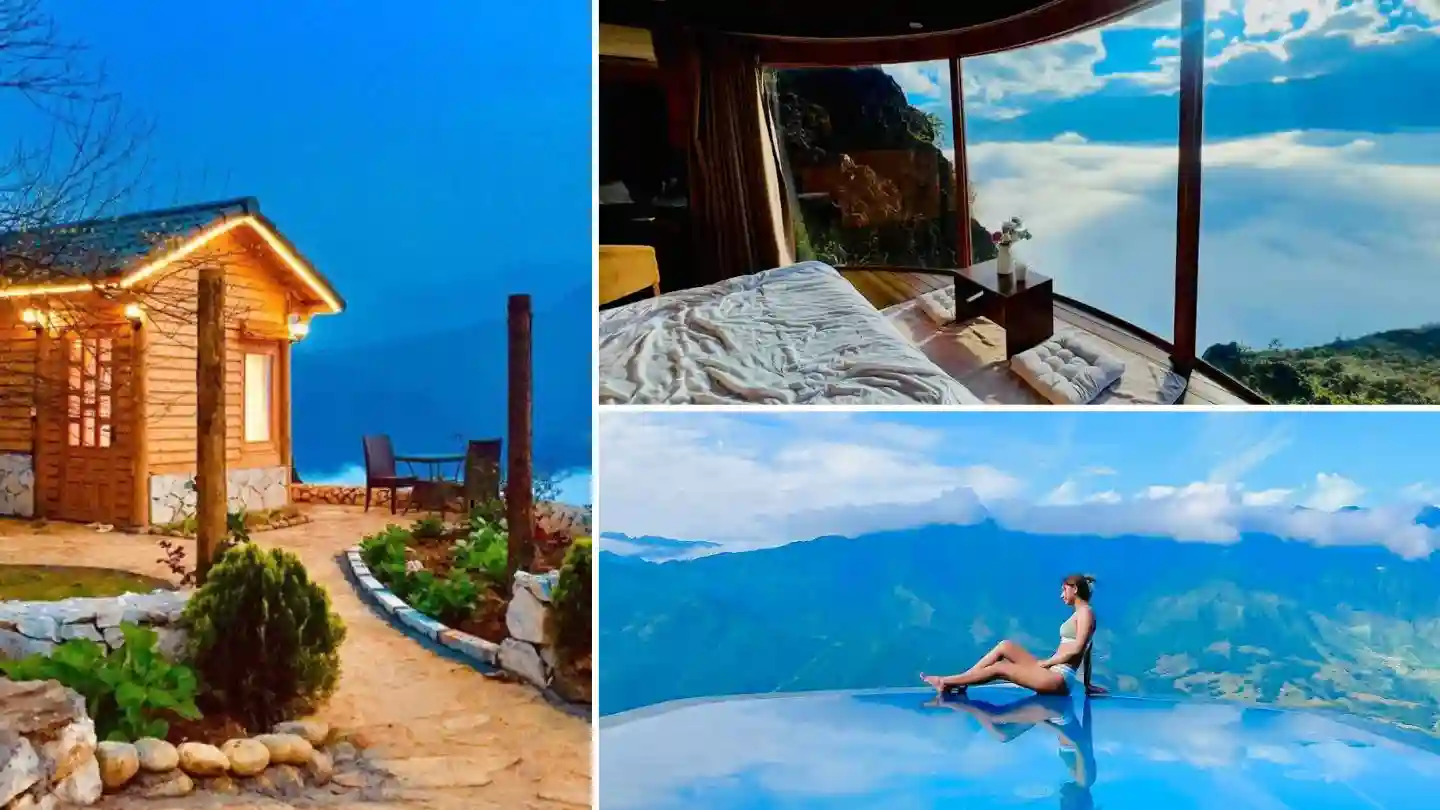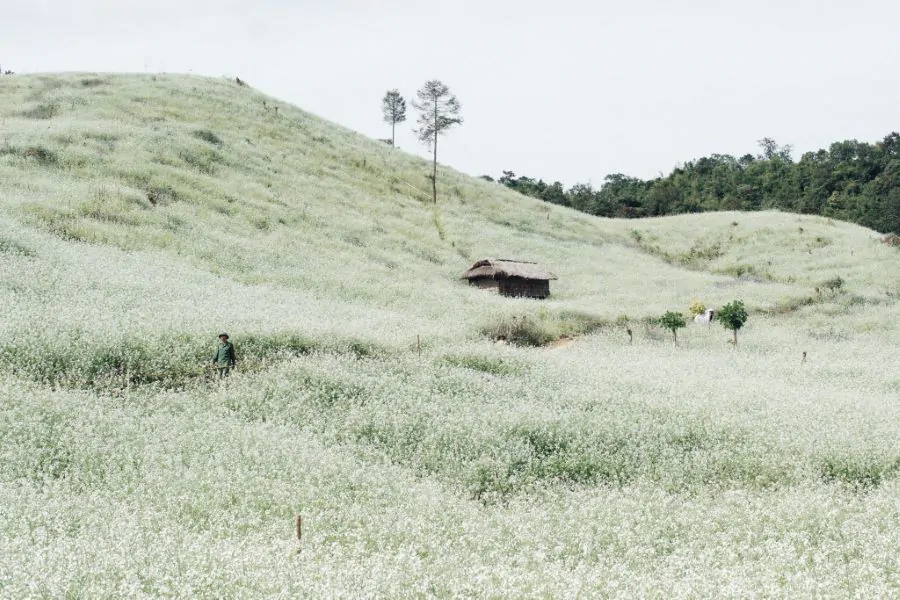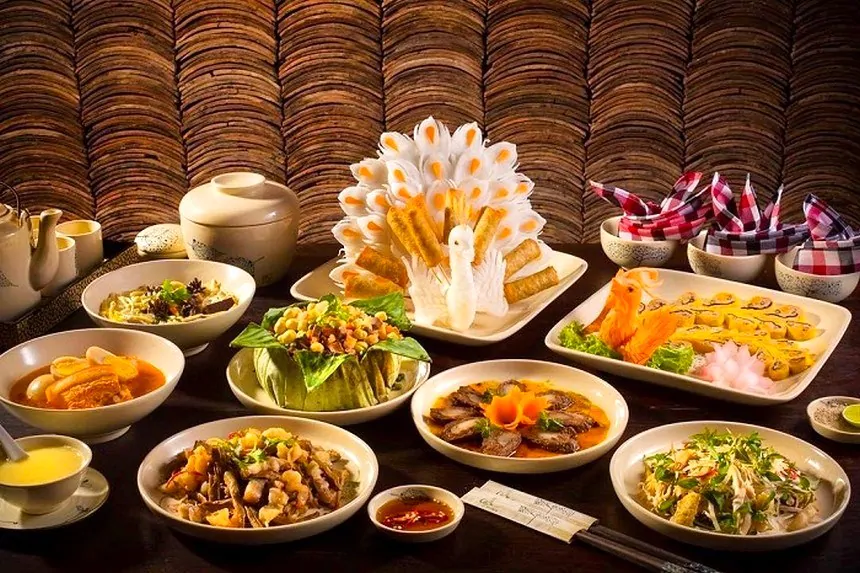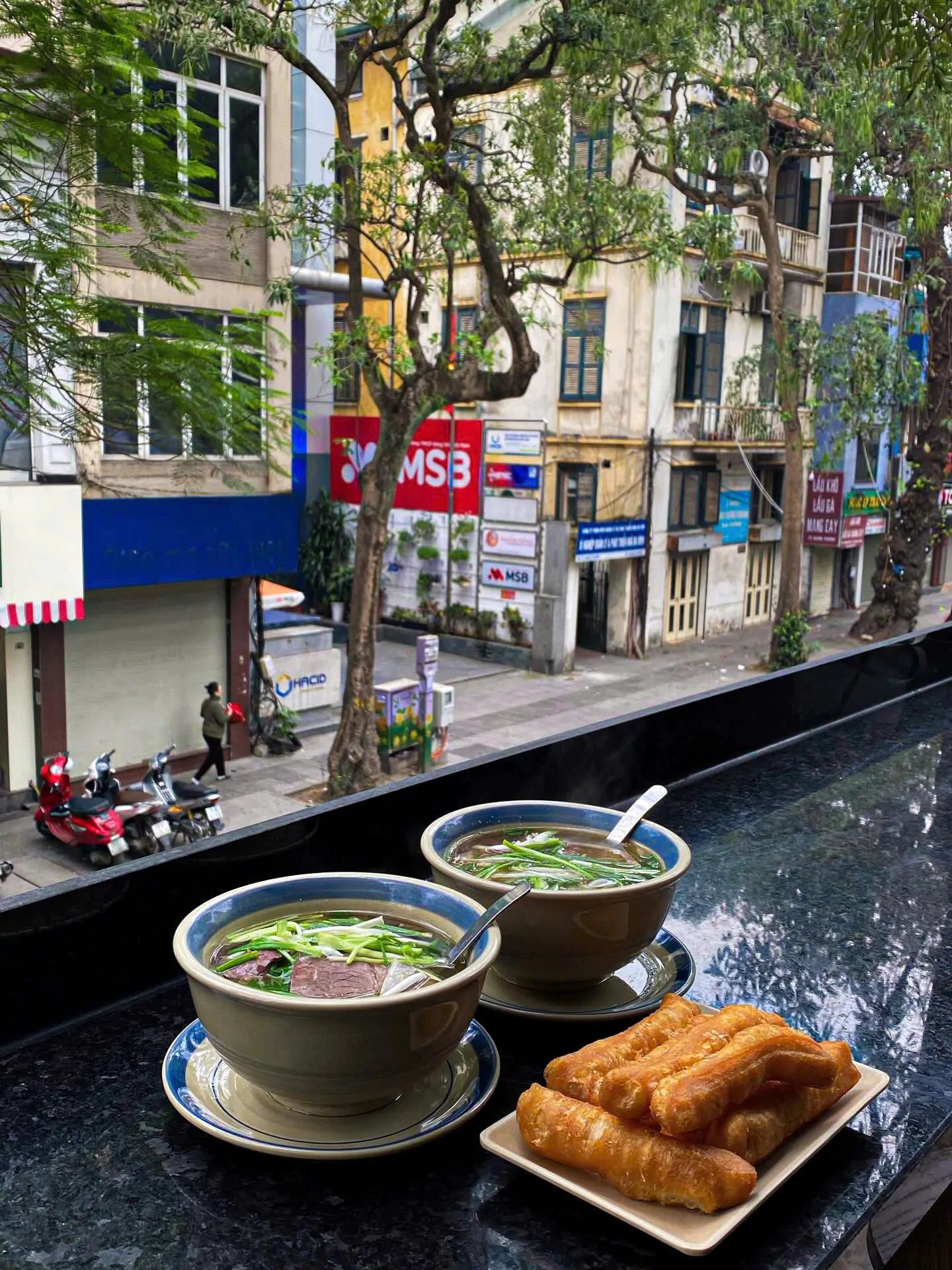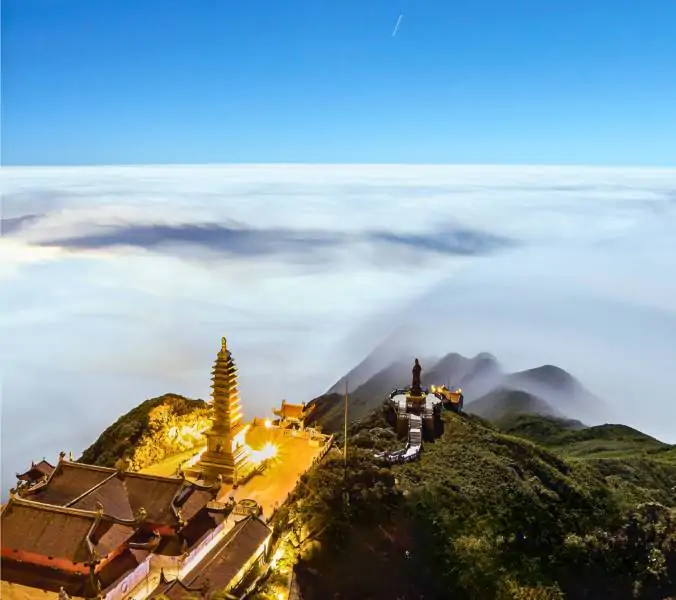Contents
- 1. Where is Mount Fansipan?
- 2. Conquer Fansipan Your Way: Trekking or Cable Car
- 3. What to Do at the Top of Fansipan
- 4. Muong Hoa Railway – Scenic Route to the Sky
- 5. Top Selfie Spots on Fansipan
- 6. Nature & Biodiversity on Fansipan
- 7. Spiritual Vibes and Sacred Silence
- 8. How to Get to Sapa and Fansipan
- 9. Tips Before You Go
- 10. Conclusion: Why Fansipan is the Heart of Sapa Tours
Fansipan Mountain – The Roof of Indochina and a Highlight of Sapa Tours Located in the majestic Hoàng Liên Sơn mountain range, just 9 km from Sapa town, Mount Fansipan stands tall at 3,143 meters — the highest peak in Vietnam, Laos, and Cambodia. Often referred to as the “Roof of Indochina,” this awe-inspiring destination is a must-see on all Sapa tours, offering not just panoramic views but a truly transformative experience for nature lovers and cultural explorers alike.

1. Where is Mount Fansipan?
Situated in Lào Cai Province, Northern Vietnam, Fansipan is the crown jewel of Sapa tours, attracting thousands of visitors each year. It was once a destination for only experienced trekkers, but the introduction of a modern cable car system in 2016 now makes the summit accessible in just 15 minutes.
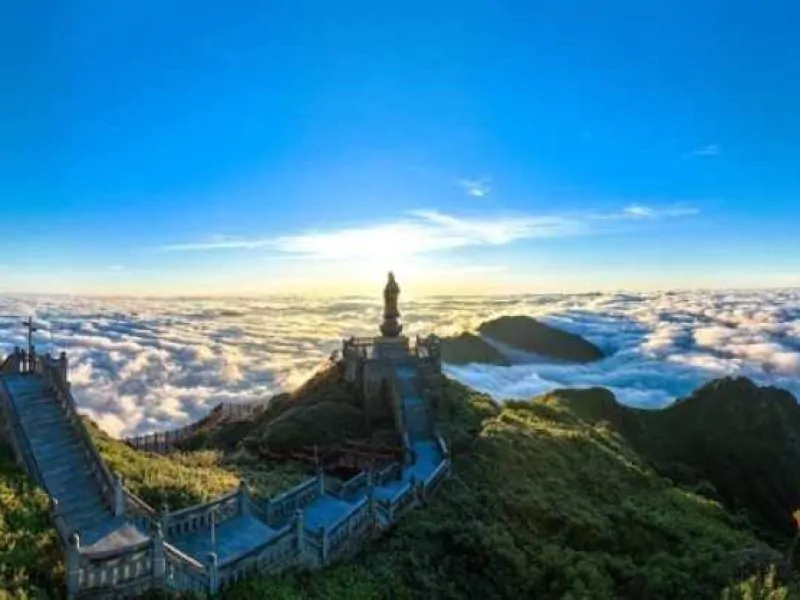
2. Conquer Fansipan Your Way: Trekking or Cable Car
2.1. Trekking Adventure
For thrill-seekers, trekking Fansipan is an unforgettable challenge. Most treks start from Sapa and take 2–3 days. Local guides — often from the H’Mong or Dao ethnic groups — accompany hikers through dense forests, rocky terrain, and river crossings.
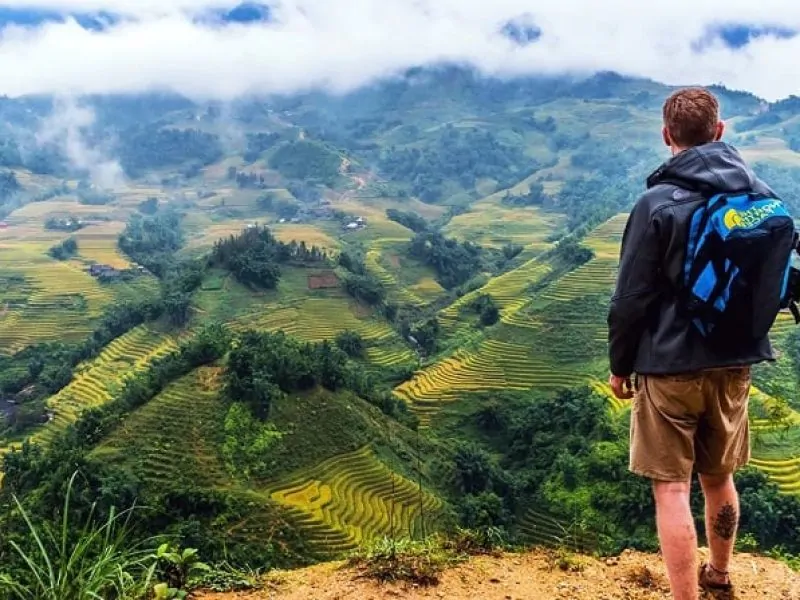
You’ll camp overnight and rise early to catch the sunrise from the summit, a moment of pure magic.
💡 Tip: Bring sturdy shoes, warm clothes, and a power bank — there’s no electricity on the trail!
2.2. Cable Car Experience
For a more comfortable journey, take the Sun World Fansipan Legend cable car, gliding over the Muong Hoa Valley with epic views of rice terraces.
It takes just 15 minutes to reach a station near the summit — from there, it’s a 600-step climb to the peak.
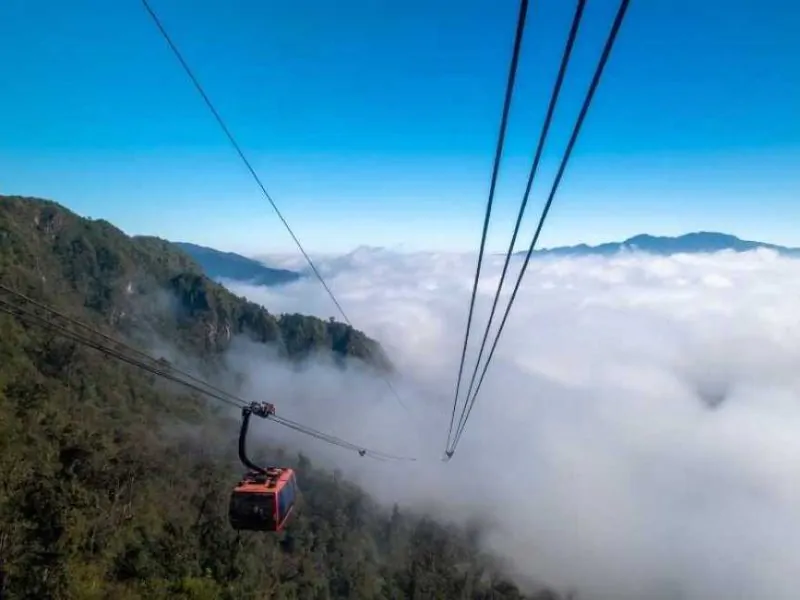
Cable Car Ticket Prices:
Adults: 750,000 VND (~32 USD)
Children (1m–1.4m): 550,000 VND (~25 USD)
Under 1m: Free
3. What to Do at the Top of Fansipan
More than just a summit marker, Mount Fansipan features a vast spiritual complex, combining sacred Buddhist architecture with breathtaking mountain views.
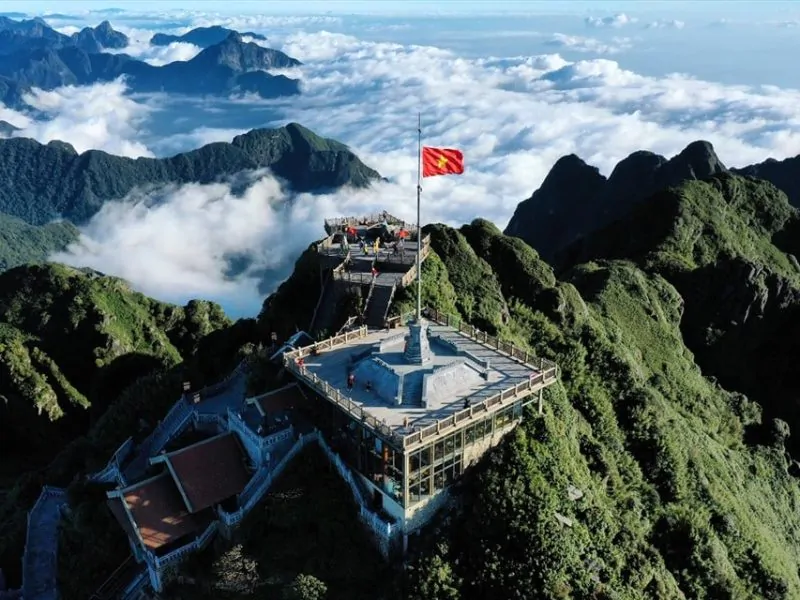
Spiritual Landmarks to Explore:
Great Buddha Statue: 21.5m-tall bronze icon at 3,000m
Kim Son Bao Thang Pagoda: Temple in Tran dynasty style
Giant Quan Âm Statue: Serene 12-meter bronze statue
9-Tier Waterfall & Pagoda: Symbolic sacred space
Alahat Trail: Path lined with 18 Arhat statues and blooming rhododendrons
Mountain Deity Shrine: Honoring ancient Vietnamese beliefs
4. Muong Hoa Railway – Scenic Route to the Sky
Before boarding the cable car, ride the Muong Hoa Mountain Railway from Hotel de la Coupole to the cable station — a charming 6-minute trip for just 100,000 VND (~4.5 USD).
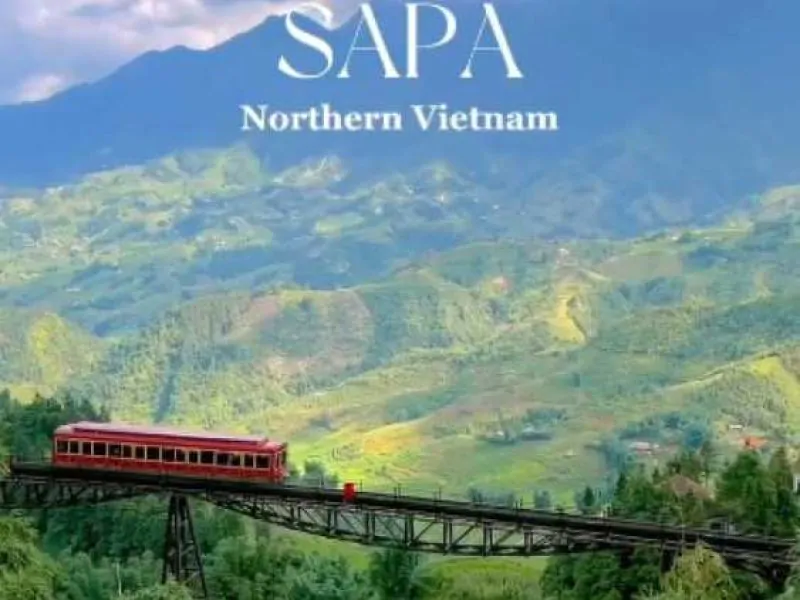
At the Summit:
Mini mountain train available:
Upward ride: 70,000 VND
Downward ride: 80,000 VND
Ideal for families or those who prefer a more relaxed climb to the summit.
5. Top Selfie Spots on Fansipan
📍 Summit Marker: Iconic triangle marking Indochina’s highest point
🚩 Fansipan Flagpole: 25-meter flagpole adorned with Vietnamese cultural engravings
⏰ Best time for photos? Before 9 AM to catch sunrise and avoid crowds!
6. Nature & Biodiversity on Fansipan
Fansipan is a UNESCO-listed ecological gem, boasting:
1,600+ plant species
Ancient tropical forests
Bamboo groves and rare flowers
Wild rhododendrons blooming between December and June
Whether you trek or ride the cable car, the biodiversity and changing landscapes make the journey truly remarkable.
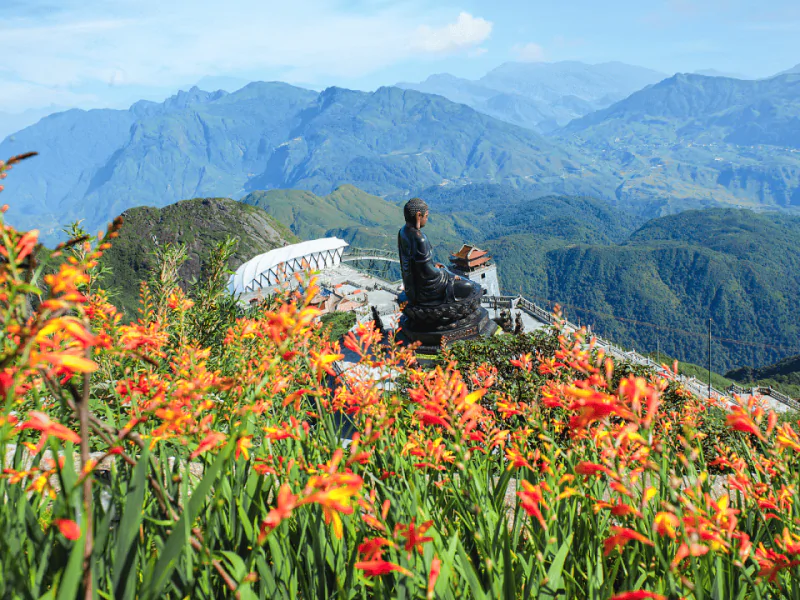
7. Spiritual Vibes and Sacred Silence
Above 3,000 meters, surrounded by clouds, temples, and statues, Fansipan offers a peace that’s hard to find elsewhere. The silence, spiritual atmosphere, and surreal beauty make this spot unlike any other on Sapa tours.
8. How to Get to Sapa and Fansipan
From Hanoi to Sapa:
By bus: 5–6 hours
By overnight train to Lao Cai: 8 hours, then 1 hour drive to Sapa
From Sapa to Fansipan cable car station: Just 2 km, but allow 30+ minutes by taxi due to steep, winding roads.

9. Tips Before You Go
🎒 Trekking? Pack warm clothes, flashlight, snacks, water, and a power bank.
👟 Cable car? Wear comfy shoes for climbing 600 steps.
📅 Visit early for peaceful vibes and amazing sunrise photos.
📌 Book in advance during peak season (Sep–Nov, Mar–May).
10. Conclusion: Why Fansipan is the Heart of Sapa Tours
Fansipan Mountain in Sapa, Vietnam is more than just a trek — it’s a complete experience that blends breathtaking nature, sacred spiritual sites, and rich ethnic culture. Whether you’re hiking through misty jungle trails or gliding above the clouds by cable car, this adventure is unforgettable.
👉 Don’t miss this crown jewel of Northern Vietnam.
Book your unforgettable journey with Vietnam Discovery Tours — we’re here to help on WhatsApp for quick and easy support.







